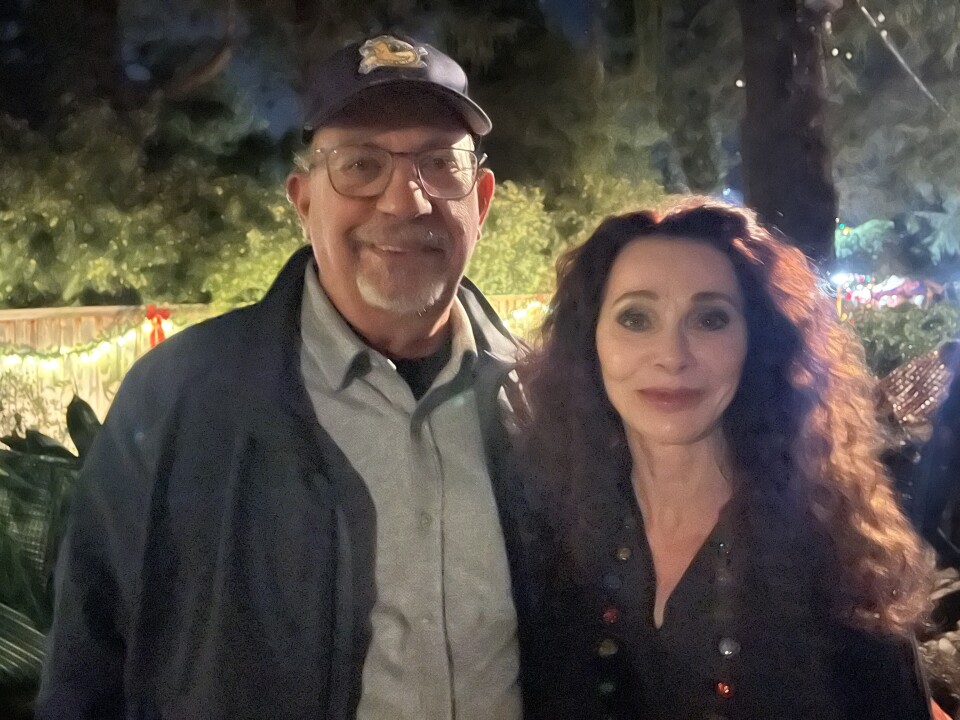The battle has been brewing for years. Massive technological advances have completely changed the rules of the game in the entertainment industry. And the losers are the creatives — the actors and writers who make Hollywood products come alive.
Sound familiar? While the scenario above accurately describes the atmosphere that has caused SAG to join the WGA in striking during this long, hot summer of 2023, 63 years ago a dual strike was called for very similar reasons.
During the rise of television in the 1950s, film studios began making an enormous amount of money licensing their movie catalogues to TV stations. While the studios made millions off these deals, actors and writers received nothing.
Throughout the decade, the Screen Actors Guild was unsuccessful in attempts to get their actors residual benefits for their work. According to actor and historian Wayne Federman, by 1959, negotiations with Hollywood producers had become so contentious that actor and future California governor Ronald Reagan (who had already served as SAG leader from 1947-1952) was convinced to run for leadership again, despite the reservations of his wife, Nancy.
Reagan is reelected and studios play hardball
Reagan was reelected at a particularly tense time. Both the actors and producers were thoroughly entrenched on their opposing sides. In an attempt to scare actors, the studios leaked that they had a backlog of 135 unreleased films to tide them over during a strike.
“Spyros Skouras, head of 20th Century-Fox and the major producers’ representative in negotiations, cried real tears when he explained to…the actors on the negotiating committee that payments of residuals would bankrupt the studios,” writes David F. Prindle in The Politics of Glamour: Ideology and Democracy in the Screen Actors Guild.
SAG was also fighting for a health and pension plan like that of other Hollywood unions. But the producers would not budge. The WGA found themselves at a similar impasse. The writers’ union went on strike on Jan. 17, 1960. A month later, 83% of SAG members gave their leaders permission to strike “if necessary.”
On Feb. 23, a SAG strike was officially called, with all motion picture actors ordered to stop working at 12:01 a.m. on March 7.
“The dreaded eventuality that the industry hoped to avert, a strike call by Screen Actors Guild, materialized yesterday,” The Hollywood Reporter wrote, “throwing not only Hollywood but also the exhibition field at large into something of a panic.”
Motion pictures already in production scrambled. On location in New York the cast and crew of Murder, Inc., starring Peter Falk, May Britt and Morey Amsterdam, worked nights and over the weekend in an attempt to finish production before the March 7 deadline.
A star-studded union meeting
On March 14, around 3,000 actors including Bette Davis, James Cagney, Dana Andrews, James Garner, Myrna Loy, Esther Williams, Ernest Borgnine, John Wayne, Van Heflin, and Edward G. Robinson met to discuss the ongoing strike. The Los Angeles Times reported:
What was probably the most star-studded union meeting in history convened last night at the Hollywood Palladium as Screen Actors Guild members discussed their strike against major film studios. A standing vote of confidence was given to the strike. The motion was made by actor Warner Anderson and seconded by Cornel Wilde.
The meeting was presided over by Reagan, who was elated by the actors’ overwhelming support for the strike.
“The motion from the floor endorses the negotiating committees’ position and it was particularly impressive because it was by acclamation,” he told the Los Angeles Times.
According to Prindle, producers and their allies in the press were quick to cast aspersions on the movie stars joining the fight, overlooking the rank and file of struggling actors who overwhelmingly made up SAG, instead lampooning the “’two handsomely dressed doormen’ who ‘parked the worker’s limousines and sports cars’ as they arrived at a membership meeting.”
More conservative members of SAG disagreed with the decision to strike, with gossip columnist Hedda Hopper (who had once been a character actress) stating, “I don’t think it’s moral to accept money twice for a single job,” overlooking the fact that that was exactly what the major studios were doing.
The strike shut down eight productions, stopping work on films including Let’s Make Love, starring Marilyn Monroe, Elizabeth Taylor’s Butterfield 8, and The Wackiest Ship in the Army, starring Jack Lemmon.
Why Reagan later said Gorbachev was easier than the studio heads
While some actors, like beloved comedienne Gracie Allen, refused to do allowed TV work in solidarity, other actors pivoted to television in order to make a living. The trades (who were decidedly pro-movie studios) claimed out-of-work actors were increasingly restless, with The Hollywood Reporter’s Mike Connolly claiming one actor told him, “I can’t eat principle.”
Below-the-line crew members also suffered. According to Variety, the California Department of Employment reported that 3,900 non-striking workers had been laid off due to the strike.
SAG president Ronald Reagan led negotiations with producers.
“Reagan would later joke that negotiating with Mikhail Gorbachev, the Soviet leader, over arms reduction was nothing in comparison to having to negotiate with the studio heads,” said Iwan Morgan, author of Reagan: American Icon, in an interview with The Washington Post.
Not everyone was happy with Reagan’s role. As many have noted, Reagan should have never been in charge of leading SAG negotiations because he was also a producer. Once a staunch progressive Democrat, he was becoming increasingly conservative, and rubbed other SAG leaders the wrong way.
“I was a vice president of the Screen Actors Guild when he was its president,” James Garner wrote in The Garner Files. “My duties consisted of attending meetings and voting. The only thing I remember is that Ronnie never had an original thought and that we had to tell him what to say. That’s no way to run a union, let alone a state or a country.”
A deal is brokered
Finally, a month later, on April 8, a residuals deal was finally brokered between SAG and the producers.
“They reached a compromise,” Kate Fortmueller writes in Below the Stars: How the Labor of Working Actors and Extras Shapes Media Production. “Residuals would be paid on films from 1960 forward, with an additional $2.5 million paid toward the SAG pension and health fund.”
The WGA strike, however, would continue until June 12, 1960. According to the WGA’s official website: “Gains included the first residuals for theatrical motion pictures, paying 1.2% of the license fee when features were licensed to television; an independent pension plan; and a 4% residual for television reruns, domestic and foreign. Also, this groundbreaking contract established an independent pension fund and participation in an industry health insurance plan.”
Many SAG members felt Reagan, increasingly involved in big business, had brokered a bum deal in terms of the residuals deal. According to Dark Victory: Ronald Reagan, MCA, and the Mob, actors called the deal “The Great Giveaway.”
Comedian and movie star Bob Hope was incensed, since he would not receive a penny from the films he made before 1960.
“The pictures were sold down the river for a certain amount of money,” Hope said, per Prindle. “I made something like sixty pictures, and my pictures are running on TV all over the world. Who’s getting the money for that? The studios? Why aren’t we getting some money?”
Former child star Mickey Rooney was blunter. “SAG screwed us,” he said, “and I’m mad about it.”




























